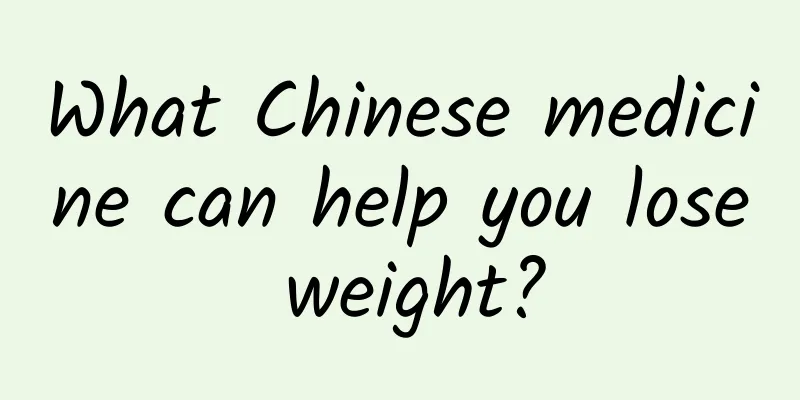What are the methods used by old Chinese doctors to treat cough

|
When we catch a cold, we often have symptoms of coughing. Of course, there are many reasons that can cause coughing symptoms, including pneumonia, etc. If you want to treat coughs, the methods of traditional Chinese medicine are worthy of recognition. Traditional Chinese medicine can give different treatment plans according to the patient's different conditions. While treating coughs, it can also help regulate the body. Today, we asked an old Chinese medicine doctor to introduce several commonly used methods of traditional Chinese medicine to treat coughs. Erchen Decoction. Ren Yingqiu used this prescription to treat cough in the middle burner. Cough with phlegm and dampness is more common in children. After taking medicine for a cold and cough, the fever and cough of the child subsided and were relieved. However, the child still coughs every morning when he wakes up. This is because the spleen and stomach have been damaged. This kind of cough is for expelling phlegm, which is actually a phlegm disease. Once the phlegm is resolved, the cough will also be relieved. In this case, Erchen Decoction is very effective. On the basis of Erchen Decoction, you can add or subtract ingredients according to the syndrome, such as Ma Xing Erchen Decoction, Chai Qin Erchen Decoction, Gui Shao Erchen Decoction, Qin Lian Erchen Decoction, Xing Jue Erchen Decoction, San Zi Erchen Decoction and so on. The Qingqi Huatan Pills that we are familiar with are derived from Erchen Decoction with additions and subtractions. Sanzi Yangqin Decoction is also used to treat phlegm and dampness cough. It is rarely used in children but often used by the elderly. Daihesan. Treats cough caused by liver heat invading the lungs. I don’t see it very often in clinical practice. I don’t know if it’s because I don’t know it or if it’s really not common. Occasionally, individual symptoms of Danzhi Xiaoyao San are seen. When I consider liver fire, I will add a little gentian to the prescription. Nourishing Yin and Clearing Lungs Decoction. Many people like to use it to treat internal injury and cough, but there is a high chance of using it incorrectly. To use it wrongly means to retain the evil. The prerequisite for using this prescription is that the patient is basically healthy, at least with less tongue coating and a thin pulse. However, there are not many such patients, so there are not many opportunities to use this prescription. Duqi Pills. Used for renal cough. This recipe is based on Liuwei Dihuang Pills with the addition of Schisandra chinensis. For cough, doctors dare to use Yangyin Qingfei Pills, but often forget to use Duqi Pills. I always feel that treating a cough won’t work without taking the lungs into consideration. But if the cough cannot be cured and there is some kidney deficiency, then the treatment focus should be shifted to the kidneys. This is of course difficult, because the temptation to us caused by the lung's failure to descend is too great. Jinshui Liujun Decoction. Zhang Jingyue added cooked rehmannia and angelica to Erchen Decoction, and it became Jinshui Liujun Decoction. If Xu Lingtai saw this kind of prescription, he would always curse it. But it is undeniable that Zhang Jingyue's prescription became famous. It is used for kidney deficiency in the lower Jiao and phlegm and dampness in the middle and upper Jiao. Qiu Peiran from Shanghai said in "Hutian Sanmo" that at first he had no feeling about using cooked rehmannia for phlegm syndrome. When he saw that the patient had so much phlegm, how could he dare to use cooked rehmannia. Later he found that some phlegm syndromes could not be cured, so he had no choice but to use cooked rehmannia, and found that the phlegm was reduced. This phlegm comes from water overflowing from the lower abdomen. He also believed that a small dose of Rehmannia glutinosa would cause nausea, but a large dose would go straight to the lower abdomen. I have never tried to study the relationship between nausea and vomiting and dosage. The ancients liked to use cooked rehmannia with atractylodes or amomum. Buzhong Yiqi Decoction. Li Dongyuan used Buzhong Yiqi Decoction to treat cough caused by internal injuries to the spleen and stomach. In spring when the weather is warm, add ophiopogon japonicus and coltsfoot lily; in summer, add schisandra chinensis and ophiopogon japonicus; in autumn and winter when the weather is cool, add ephedra with the roots and nodes not removed. If you have been suffering from phlegm and cough for a long time, and there is hidden fire in the lungs, remove the ginseng. But if you are just beginning to suffer from the disease, do not remove it. Clinically, when we identify the cough as suitable for Bu Zhong Yi Qi Tang, do not doubt it and use it with confidence. The Yishui School's method of using medicine according to the four seasons is rarely used in modern times. |
<<: What is the method of drinking Artemisia selengensis soaked in water?
>>: How to quickly relieve abdominal cramps
Recommend
Does drinking Chinese medicine on an empty stomach hurt the stomach?
Many medicines for treating diseases need to be t...
What to do if the wound turns black
Skin damage is quite common in our daily life. So...
How is a belly cyst formed? Is it serious?
Liver cysts are a relatively common form of cysts...
Does adenomyosis cause abdominal pain?
Adenomyosis is particularly common and is also a ...
Ointment for treating abscesses
Pustules are a common phenomenon caused by skin i...
Anal flesh eversion during defecation
If the flesh of the anus protrudes outward during...
Is the interruption of bone continuity serious?
Everyone has experienced fractures in life, some ...
Breast augmentation, this is the most effective way to enlarge breasts
In daily life, when female friends are doing brea...
What is the cause of hair loss and white spots at the roots?
When hair loss occurs, white spots appear at the ...
Does chronic pharyngitis cause coughing?
The characteristics of chronic pharyngitis are a ...
Symptoms of testicular nodules
Many people get scared when they hear the word &q...
What are the effects and functions of thistle root
The root of the great burdock is a very pure Chin...
Do you know the correct way to cook Chinese medicine?
Nowadays, many people need to take Chinese medici...
Treatment of spinal osteophytes
In the process of human growth from childhood to ...
Why is the first day of menstruation black?
If the menstrual blood is black on the first day,...









